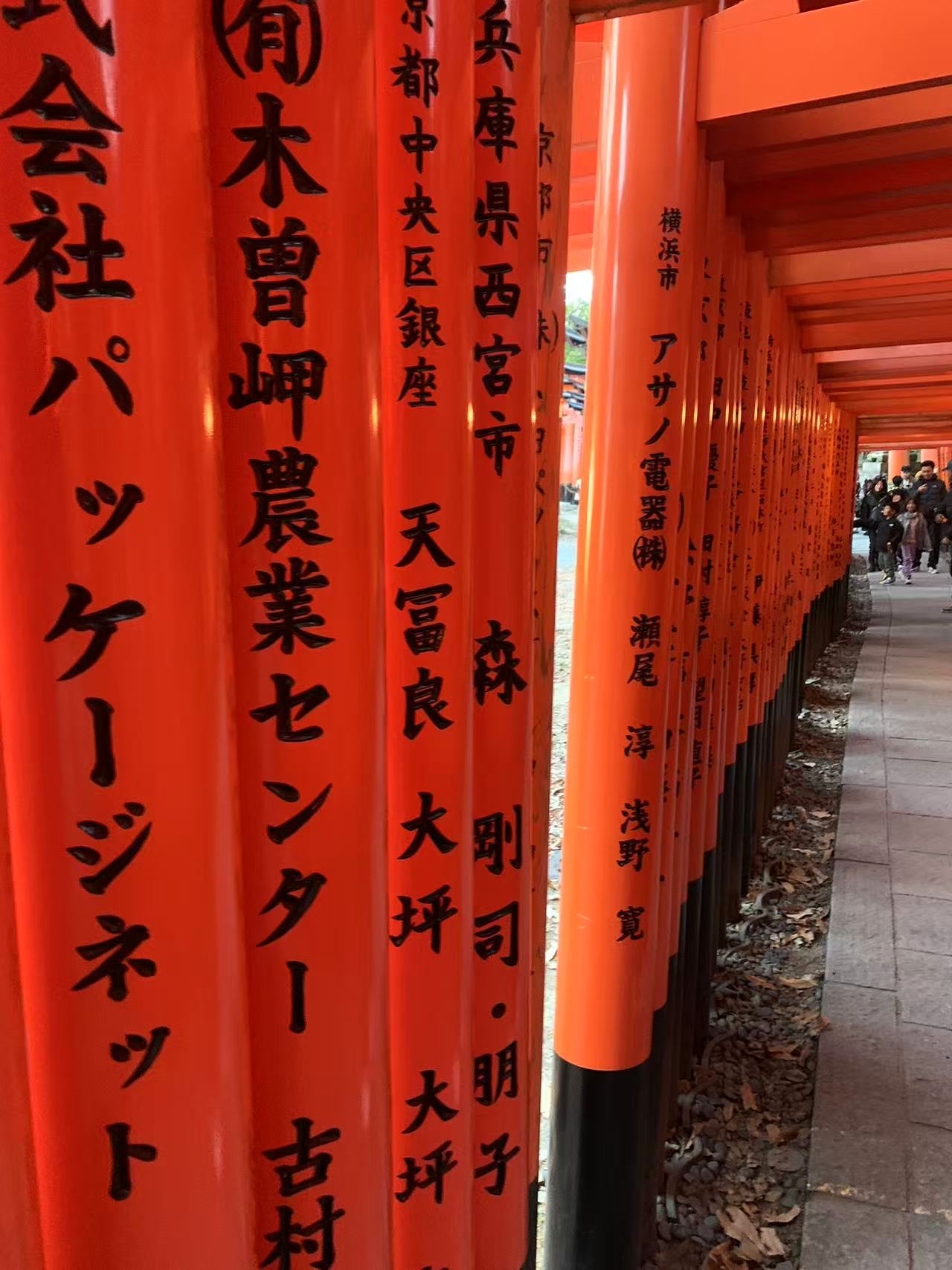Last Christmas holiday, my parents and I went to Japan. This blog post will focus on the things I found interesting in Kyoto.
Since Kyoto doesn’t have an airport, we had to fly to Osaka and then take a bus for over two hours to reach Kyoto. I had to wake up in the middle of the night to catch the flight, and I was absolutely exhausted…When I arrived in Japan, I noticed that the architectural style and colours here are quite different from those in China.
The street views along the bus route were uniformly white, light blue, or grey. Perhaps it’s due to the season or latitude, but the plants outside were all a uniform wheat-like pale yellow.
To my surprise, there were many buildings along the bus route. In China, cities are connected by elevated motorways or high-speed rail tracks, with vast stretches of greenery in between. However, on this route, even between cities, there were no skyscrapers—just rows of irregularly shaped single-storey houses, with occasional small fields. I learned that even in a city like Kyoto, the government restricts building heights, so most buildings average six to eight storeys (apparently because tall buildings would affect the scenery).
From a distance, Japanese buildings look chaotic and small. But when you walk among these houses, you realise each one is uniquely designed, and any single one would stand out as remarkable if placed in China. Moreover, the alleys between these houses are incredibly clean, especially the streets in front of restaurants, which are washed every morning with water hoses.
(These observations might be specific to the area I visited, so please excuse any inaccuracies.)
Kyoto has a famous river called the Kamo River. It was around 3 when I was walking along the Kamo River, and I saw students who had just finished school, hanging out and having fun on the spaces beside the lake. There were students playing football, baseball, and riding bicycles. Plus, the view was splendid!

Kyoto’s temples are really famous, with roof shapes similar to the curved roof shape of Suzhou-style architecture. The layout of the temples carries a hint of Chinese landscape painting, appearing harmonious and magnificent. Japan also has a distinctive type of temple feature—torii gates ⛩️. Torii are gates formed by multiple red columns standing on the ground. And interestingly, each pillar is donated by an individual or group. In all Japanese temples, there are fortune slips you can draw, which indicate outcomes like “bad luck,” “good luck,” or “great luck.”


After spending a few days in Kyoto, I realised how much I love Japanese convenience stores and supermarkets. They have numerous delicious drinks, fruits, and snacks. Most importantly, they offer fresh, tasty, and affordable sashimi. If you visit Japan someday, I strongly suggest you try the sashimi there.

I was getting dejavu reading this until I realised that this is the second report in our class from this part of Japan (see https://mushroom-scholars.org/the-travel-to-japan/).
I like the disclaimer (These observations might be specific to the area I visited, so please excuse any inaccuracies.) and the images 🙂
Your theme of comparisons with China is interesting and you maintain it well throughout. You also have made good use of emoji/emoticon for purpose: ⛩️
Perhaps a little more description of your feelings might make your writing more engaging.